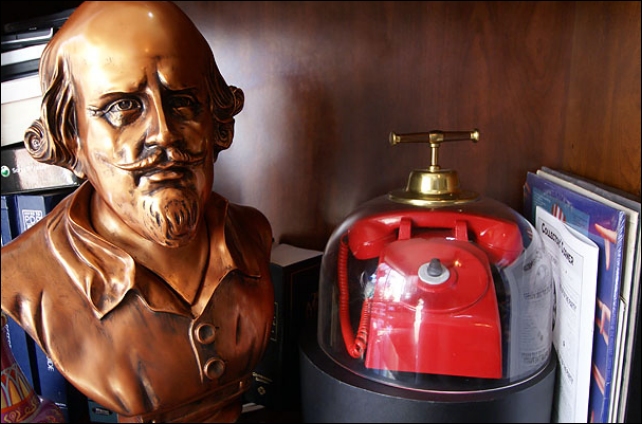Smart-eyed web watchers will have spotted the Zumba being promoted on the BBC last week – a revolutionary phone that is 100% voice controlled, 100% secure, that's never been seen before and will (apparently) be in the stores by Christmas. While my natural suspicion is piqued when someone claims 100% secure; and most watchers want to see a demo of it in operation and not a mock up (the quote on the BBC from CEO Dean McEvoy is that "the technology is so top secret, I can't even give you a demonstration of how it works."), the Zumba does raise one issue in my mind:
Does anyone want it?
Put aside this specific case and any questions you might have about the validity of the concept. But the consumer electronics world is full of brilliant technological innovations, that do exactly what they say on the tin. But will customers buy them? Nope.
There is no automatic 'build it and they will come' in the tech world. Smart ideas need to have users wanting the features, and not have them presented to them. The Psion Netbook, a small A4 sized laptop with full colour screen and keyboard went on sale in the late nineties to enterprise users. The Psion-loving public demanded a consumer version, and the Series 7 was released to critical acclaim, if not stellar sales figures.
Fast forward to the Palm Foleo – announced as the latest thing to revolutionise the world of Palm Users. Everyone looked at this extension to a Palm PDA, that gave it a full screen and keyboard. It was certainly a technological step forward, but it wasn't what people wanted. They wanted an actual tiny computer. They found it in the Asus EEE and boom! Instant hit, new sector, and people lapped it up.
The smartphone world has numerous examples as well. The classic N-Gage had a great form factor, but needed to be used on its spine as a phone – the classic taco pose. Did Nokia think this would work? Someone did. What about the consumer? No thank you, and it was quickly replaced with the N-Gage QD and a more regular speaking orientation.
Don't even get started on the funky keypad layouts of the Siemens SX-1 or the Nokia 3650.

Technology has to improve though, and sometimes the manufacturer can lead their customers to a new area. The rapid adoption of digital photography into phones is one such area. A few years ago cameras were rare, but their inclusion now is de reigeur. You could argue that Nokia has dragged the consumer along to take in GPS and Mapping on their phone thanks to the bundling of software on GPS-enabled handsets.
Sometimes those consumer requests can seem strange to many. The fascination with continuing to have an infrared port is occasionally questioned in reviews, and for many it's superfluous and should be removed. Sometimes the wisdom of the crowds isn't quite right. Once you're in a crowd and try to send your contact card over Bluetooth, then you'll know why....
Of course, crowds can be a great source of ideas as well. Watching the feedback come in on the Nokia 9500, the biggest request was for a communicator that opened up through 180 degrees to lie fully flat on a desk. The 9300 duly obliged, as did the follow-up E90.
New technology is always a sum of its parts, but this is normally thought of as the physical ideals. If you think about averaging where everyone wants to go, the direction of the manufacturer and the wishes of a customer, you get the true direction of change. And while either side can strike out on their own direction and bend the other partner, like a rather average bow and arrow there comes a point when the bow will snap.
Right before that happens, that's when you get cutting edge products pushing the envelope; that's when you get massive successes and change the path of technology. The question is: how far do you think you can pull on the bow? And of course if it does snap, you've got a lot of mess to clean up.
Think of the times when you have picked up a new phone and started investigating what it can do. There are some things that are obvious, that you feel comfortable with. But it's when you as a user start pushing the phone to do new things (such as wanting always on connectivity to feed your location to a social network) that you realise how far the companies are trying to influence what you expect in a smartphone.
You can pull back, but I think that the majority of readers at All About Symbian are the sort of people who will want the bow to continue to be pulled. Like any group of power users, we're putting stress on the bow as well. That's why we're so critical of tiny things on a device.
Compare a normal user to a power user – they just want a phone to work, they don't add any stress to the bow. As long as the regular features haven't been pulled too far out of shape, they're going to be happy.
And I think that's about as far as this 'bow and arrow, shooting to the heart of innovation' analogy can be fired. After all, I've no idea where the carrier networks fit in!
-- Ewan Spence, Feb 2009.
